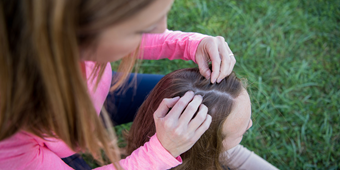Battling the Nasty Norovirus: 7 Questions to Ask

Answer a few questions and we'll provide you with a list of primary care providers that best fit your needs.
Ugh. Norovirus, aka the dreaded “stomach flu,” is not really a type of flu at all (more on that in a bit). But it is a highly contagious and rather dreadful bug, with some rather unpleasant symptoms, that most of us will catch at some point in our lives.
If you’ve already suffered from a norovirus, don’t think you’re off the hook. Because there are so many different types of norovirus, being infected with one type may not protect you against the others. You could catch this lovely illness several times during your life — an average of five times for most people, according to the Centers for Disease Control (CDC).
Since norovirus is so very common and so very contagious, it helps to know some of the basic facts about it, so you can do whatever it takes to lessen your risk of contracting it.
1. What Is It?
Norovirus is, obviously, a “virus” that can affect the stomach and intestines. It is not influenza, or the “flu,” which is an entirely different strain of illness. It is extremely common and is spread more often during colder weather (when larger groups of people are gathered close together indoors, like in school). The CDC reports that more than 80 percent of outbreaks occur from November to April.
Norovirus also spreads easily year-round in gatherings of people who are in close quarters together (like on cruise ships).
It is extremely common and is spread more often during colder weather (when larger groups of people are gathered close together indoors, like in school).
2. How Do You Catch It?
According to the CDC, norovirus is found in the vomit and stool of someone who is infected. It spreads quickly, usually by:
Direct physical contact with a person who is infected; for example, caring for or shaking hands with an ill person and then touching your hands to your mouth
Eating food or drinking liquids that are contaminated with norovirus. Foods most likely to become tainted include shellfish, ready-to-eat salads and sandwiches, and produce such as celery, melons and leafy vegetables.
Touching surfaces or objects with norovirus on them and then putting your fingers or hands on or in your mouth. We often do this absent-mindedly, far more frequently than you think.
3. What Are the Symptoms?
 While some people may show no symptoms, most do. Symptoms of norovirus show up quickly after someone is infected, and may include:
While some people may show no symptoms, most do. Symptoms of norovirus show up quickly after someone is infected, and may include:
- Nausea
- Vomiting
- Abdominal pain and cramps
- Diarrhea
- Fatigue
- Muscle pain
- Fever
4. Can It Be Prevented?
There is no vaccine right now for the norovirus, and no medicine to cure it. But there is one surefire way to lessen your risk of spreading or catching it: handwashing.
Wash your hands before you eat. If you are caring for a sick family member, wash your hands after every contact.
Proper handwashing means cleaning your hands thoroughly with soap and water. If soap and water aren’t available, you can use an alcohol-based hand sanitizer. However, while these products can help reduce germs, sanitizers are not a perfect substitute for washing with soap and water.
Practicing good hygiene is important all the time, not just when you or your loved one are ill. That’s because norovirus can be camping out in your stool before you show any symptoms, and can stay in your stool for two weeks or more after you feel better. This means you are still at risk for spreading the disease to others even after you are symptom-free. And people around you may have it, and not be showing any symptoms.
Some other tips:
- Carefully rinse fruits and vegetables, and cook oysters and other shellfish thoroughly before eating.
- If you have the norovirus, do not prepare food for others while you have symptoms and for at least two days after you recover from the illness.
- After someone vomits or has diarrhea, put on disposable gloves to immediately clean and disinfect contaminated surfaces (like toilets, sinks and changing tables). Use a bleach-based household cleaner as directed on the product label. If no such product is available, mix five tablespoons to 1.5 cups of household bleach per one gallon of water.
- Immediately remove and wash clothing or linens that may be contaminated with vomit or poop. Handle soiled items carefully and try not to shake them. If possible, wear disposable gloves while handling soiled clothing or linens, and wash your hands after handling. Wash the items with detergent at the maximum available cycle length and then machine dry.
5. What’s the Treatment?
There is no medicine available to cure norovirus, but you can follow this advice to help you feel better:
- Over-the-counter medications can ease diarrhea, but these should only be taken by adults. Follow package directions carefully.
- Pain relievers, such as acetaminophen or ibuprofen, can help with headaches and body aches.
- Get plenty of rest.
- Drink lots of fluids to stay hydrated. But don’t drink alcohol or beverages with caffeine. This can make your symptoms worse.
6. When Will I Feel Better?
Most people with norovirus get better in one to three days. But it can be more serious in young children, the elderly and people with other health conditions, Dr. Block says.
7. When Should I Worry?
Dehydration is the primary concern for someone with norovirus. Severe dehydration may need to be treated in the hospital, with fluids given intravenously (directly into a vein).
- Call your physician if you have:
- A fever of 100.4 degrees or higher
- Abdominal pain that keeps getting worse
- Severe dizziness, especially when getting up from bed
- Vomiting so severe that you can’t keep fluids down
In most healthy people, norovirus lasts one to three days and can be managed at home. As always, if you have any questions or concerns, make sure to call your health care provider.
Answer a few questions and we'll provide you with a list of primary care providers that best fit your needs.
Source: Centers for Disease Control




